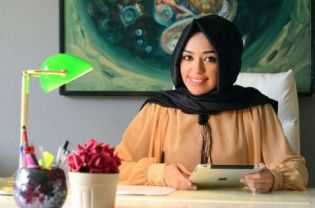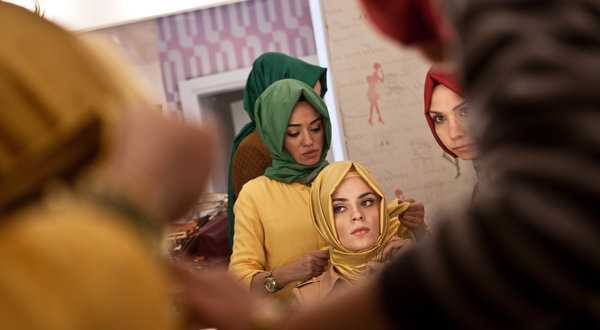
Can the Muslim headscarf be synonymous with glamor? Turkey’s first fashion magazine for conservative Islamic women hopes to prove that it can.
Launched last June, the monthly Ala, which means “beauty,” has become a mainstream glossy.
With a circulation of 20,000, it is only slightly behind the Turkish versions of Cosmopolitan, Vogue and Elle magazines.
Ala’s pages are splashed with models reflecting a conservative Islamic style, all wearing headscarves and long dresses, with their arms and necks covered.
Ala’s editor, 24-year-old Hulya Aslan, has first-hand experience with Turkey’s headscarf troubles. Because she insisted on wearing one, she had to give up a university education, instead finding work at a bank.
Ala, created by two advertisers, offers the usual fare of health tips, travel pages and celebrity interviews, supplemented by a strong dose of loud and clear Islamic activism.
“Veiled Is Beautiful” proclaims one advertisement, driving home the point with the words: “My way, my choice, my life, my truth, my right.”
But such slogans sound more like a reference to the struggles of the past, when secularism monopolized the social scene and the Islamic headscarf, often viewed as a political symbol, met hostile reactions.
The struggle continues despite the 2002 poll victory of Prime Minister Recep Tayyip Erdogan’s Justice and Development Party (AKP), which has Islamist roots and many of whose members have spouses who wear headscarves, including Erdogan’s wife, Emine.
Although the strict application of secularism has been loosened under AKP rule, headscarves are still off-limits for civil servants. It is now allowed in some universities, while many others ban them.
In Turkey, 60 percent of women wear some type of hair covering, according to a 2006 survey conducted by the Istanbul-based Turkish Economic and Social Studies Foundation.
“There are now much prettier things than before,” said Merve Buyuk, a 22-year-old trainee at Ala. “Designers have now understood that we exist. They’ve started making clothes that are not necessarily black or brown. … I’m pretty happy with this change.”
Communication scientist Nilgun Tutal of Istanbul’s Galatasaray University said Ala attested to the rise of middle- and upper-class Muslims who were adapting to the consumer society, thanks to almost 10 years of AKP rule and Turkey’s sustained economic growth.
“At one time, Islam, to distinguish itself from the West, took a position hostile to consumer society. But today, these people, to express their success, can only do that through consumer society,” Tutal said.
AFP
via Turkish Beauty Magazine Ties Muslim Veil to Glamor | The Jakarta Globe.


